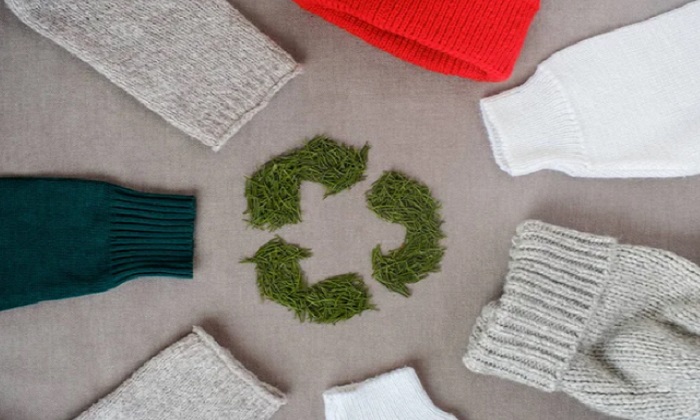Practically all textile materials are theoretically appropriate for widespread mechanical recycling, with the exception of those that may include elastane.
Another inquiry is: Are they undergoing the process of recycling? Presently, this is not really the situation, but the same applies to fabrics derived from fossils. Out of the total of 5 million tons of clothing that is disposed of annually in the European Union, a mere 1 percent is now being transformed into new garments via recycling.
Beginning in 2025, European Union nations are required to collect textiles in a different manner. Currently, 22 percent of discarded textiles are gathered in Europe. The majority of waste is disposed of in landfills or burnt for electricity generation. 50% of the textiles gathered are sold to underdeveloped nations, while the other 50% are downcycled into goods of lesser value.
Adhering to well-established materials that already have waste streams may improve the future chances of recycling. It is possible to replace their substances with bio-based substitutes.
What is the status of clothing items that fashion firms have designated as recycled material?
The majority of recycled cotton is derived from pre-consumer waste, such as cutting scraps generated in the manufacturing process, rather than from recycled clothing. Recycled polyester is derived from bottles that have been recycled. Approximately 99 percent of recycled polyester is derived from PET bottles.
In the long term, this approach is not very sustainable since it would be more advantageous to maintain monomaterial bottles inside a closed bottle-to-bottle recycling system for as extended a period as feasible.
Currently, the textile sector is addressing the waste issue of the beverage industry, rather of its own. The majority of textiles are repurposed into lower-value items such as cleaning rags and insulating material. One factor contributing to this is the fact that textiles are often composed of many materials, with the blend of polyester and cotton being the most common combination. Due to this factor, they are currently unsuitable for chemical recycling and instead need mechanical recycling.
Currently, the textile sector is addressing the waste issue of the beverage industry, rather than its own waste problem.
What are the drawbacks of mechanical recycling?
In the process of mechanical recycling, textiles are shredded, retaining all of their colors and compounds. The fibers undergo a reduction in length throughout the procedure. This implies that the resultant quality is inferior to that of the original cloth.
Chemical recycling involves the disintegration of materials at the molecular level, yielding virgin raw materials that may be used to manufacture polymer fibers of the same quality as the original material.
The quality of the resulting fabric via mechanical recycling is inferior to that of the original fabric.
How to develop more ecological and recyclable fabrics?
In the process of mechanical recycling, the output is directly proportional to the input. Higher grade original material results in higher quality recycled material.
Contemporary textile manufacturers encounter several requirements. Brands and customers want garments to exhibit various qualities, including breathability, water resistance, and fire safety. Consequently, this results in textiles containing a blend of various substances, including materials, dyes, and other chemicals, which poses challenges when it comes to recycling.
Therefore, it is advisable to refrain from using an excessive amount of dyes, treatments, and layers, unless they are necessary for the production of long-lasting textiles.
The first obstacle faced by the recycler is determining the composition of the material. Despite the label indicating 100 percent polyester, the fabric may really consist of a blend of several types of polyester, leading many people to mistakenly believe that it is totally made of PET-based material. The implementation of the new EU law mandating digital product passports for all textile items would facilitate the process by providing information on the provenance of the materials used.
The primary obstacle faced by recyclers is determining the composition of the material.
What are the strategies to enhance the sustainability of the fashion industry?
Polyester is the dominant material in the worldwide textile industry, accounting for around 60 percent of all manufactured fibers, and its market share is consistently increasing. Cotton occupies the second position, accounting for around 25 percent of the total share. These two elements are often blended in most garments.
The industry as a whole is actively seeking recyclable, renewable, or more sustainable alternatives to substitute these materials and contribute to the reduction of carbon emissions. The most significant progress is expected to come from the discovery of alternate sources for the current materials.
A viable substitute for polyester derived from fossil fuels is polyester that incorporates UPM’s wood-based mono ethylene glycol (MEG). This solution can be seamlessly integrated into the present polyester production process without any modifications, since it has the same characteristics as the petroleum-based chemicals now utilized in the resin. Consequently, it may be recycled with polyester in the same recycling channels. There is much optimism that the potential for chemical recycling of polyester will significantly enhance in the future. At present, many firms such as BlockTexx and Syre are actively working on the development of chemical recycling methods specifically designed for polyester, cotton, and their combination.
Concurrently, it is imperative that we reduce our consumption and extend the lifespan of our current possessions. Approximately 80 percent of greenhouse emissions in the textile sector are attributed to the manufacture of fibers and materials. When garments are discarded after being worn for a little period, a significant quantity of valuable raw materials and energy is squandered.
Approximately 80 percent of greenhouse emissions in the textile sector are attributed to the manufacture of fibers and materials.



































